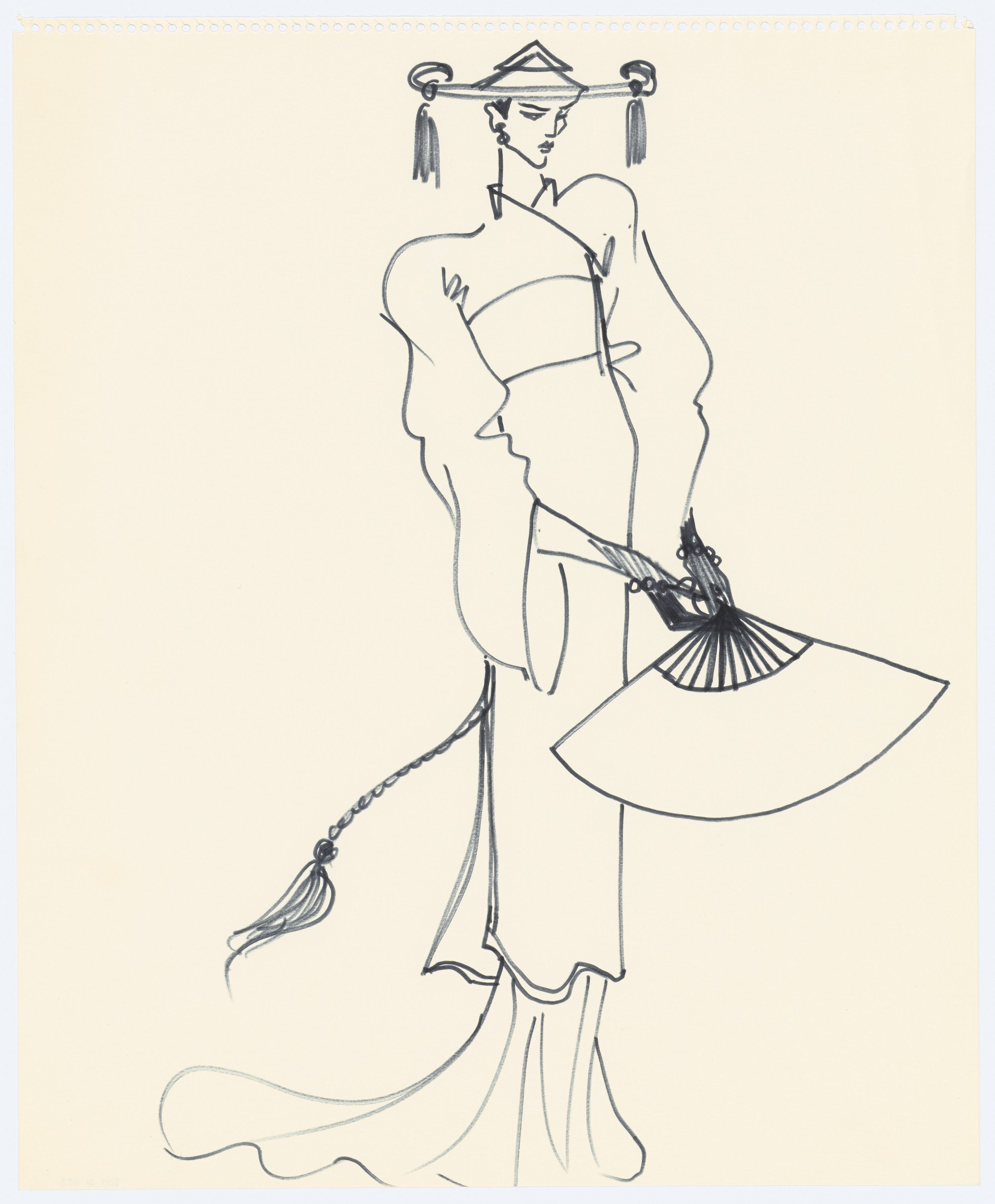Yves Saint Laurent’s Dreams of the Orient
“All I need for my imagination to blend into a place, or a landscape is a picture book […] I don’t feel any need to go there. I have already dreamt about it so much ...” Yves Saint Laurent once remarked, and inspired by this imaginary travels’ to faraway countries, the French couturier delivered a number of collections infused by knowledge gleaned from books and his love of artworks.
As the first temporary thematic exhibition since the opening in October of the Musée Yves Saint Laurent Paris, “Yves Saint Laurent: Dreams of the Orient” brings together 50 couture designs inspired by India, China and Japan, displayed in dialogue with Asian artworks borrowed from the Musée national des arts asiatiques — Guimet and private collectors.
“Asia has long exerted a fascination on European artists. In his collections, Yves Saint Laurent delivers a personal vision of it, built on a thorough knowledge of its story, its culture and its art,” says Aurélie Samuel, Director of Collections at the Musée Yves Saint Laurent Paris and curator of the new exhibition.
INDIA
Although he never travelled there, India was a major source of inspiration to Yves Saint Laurent. He started reinterpreting the traditional Indian coast as early as the Spring-Summer 1962 collection and continued through to his last collection in 2002 where he presented several draped dresses, building on the fundamentals of the sari, while also incorporated the palm floral motif — an emblem of royal power — as decorative ornament for turbans .
CHINA
Through his vast collection of books, films and the Chinese artworks he shared with Pierre Bergé, he constructed an imaginary China in the Autumn-Winter 1977 collection, though references had also been included in earlier collections such as his Autumn-Winter 1970 collection. in 1978, the designer remarked in an interview that keeping a distance from China had allowed him to roam free in his imagination and recreate the image of the country through his fashion.
He referenced the Orient through the use of floral prints and dragon-motifs, as well as motifs found on ancient vases from the Han dynasty or the jade marbled Bi disc from the Liangzhu. Instead of trying to recreate authentic historical garments he adapted the loose-fitting clothing, characteristic of Chinese Han jackets, retaining their straight cut, volume and wide sleeves but using Western construction techniques.
He referenced the long loose tunic and T-shape sleeves of the Imperial robe, retaining their straight cut and wide sleeves to give them a more masculine look but using Western construction technique. The collar, which fastened on the side, evoked the dragon robes of the Manchurian dynasty (1644-1912).
JAPAN
This is one of the few countries Saint Laurent visited (1963 and 1975), going to Kyoto to learn about Japanese traditional culture and textile weaving.
“I sought out Japan early on and was immediately fascinated by this ancient and modern country, and ever since I have been influenced by it on many occasions. Others before me shared this admiration: Monet, Van Gogh and all the art-deco artists who were so important for our time. Today, Japan continues to grow and has succeeded in the supreme miracle of celebrating the alliance of the past and present,” Yves Saint Laurent once said.
His fascination with the Edo period (1600-1868), which was characterized by a progressive emancipation of the arts from imperial power and by the golden era of Kabuki theatre, can be seen in his use of the T shape kimono silhouette in several of his creations.
Yves Saint Laurent: Dreams of the Orient, currently running at the Yves Saint Laurent Museum in Paris until January 27















